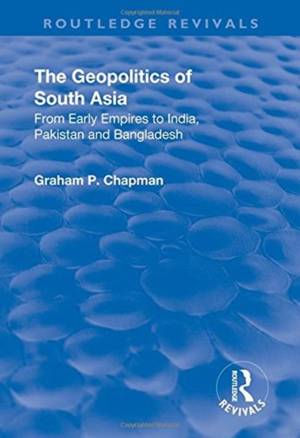
- Afhalen na 1 uur in een winkel met voorraad
- Gratis thuislevering in België vanaf € 30
- Ruim aanbod met 7 miljoen producten
- Afhalen na 1 uur in een winkel met voorraad
- Gratis thuislevering in België vanaf € 30
- Ruim aanbod met 7 miljoen producten
The Geopolitics of South Asia: From Early Empires to India, Pakistan and Bangladesh
From Early Empires to India, Pakistan and Bangladesh
Graham ChapmanOmschrijving
This title was first published in 2000: This volume explores one of the world's greatest cultural heartlands - the Indian sub-continent. It shows how geological movements moulded the land and how they still impact upon it; how the culture of early setters evolved to form Hinduism; how its wealth and power attracted the attention of Islamic invaders who founded the Sultanate of Delhi and then the great Mogul Empire; and how they were later usurped by the British Raj. The story continues with the trauma of Partition and Independence in 1947, as India's unique form of Islam shook free from Nehru's secular India with the founding of Pakistan. At different points in the story, discussions are woven in on subjects such as caste or the management of water resources. Much of the book is written in terms of the three major forces of integration.These are "identitive" forces - bonds of language, ethnicity, religion or ideology; "utilitarian" forces - bonds of common material interests; and "coercion" - the institutional use or threat of physical violence. By studying these forces, Professor Chapman shows how the organization of territory - as states and empires, as monarchic realms and as representative democracies - has been central to the region's historic, cultural, linguistic and economic development. In doing so, he contends that the lynchpin of this region's story is a geopolitical one.
Specificaties
Betrokkenen
- Auteur(s):
- Uitgeverij:
Inhoud
- Aantal bladzijden:
- 360
- Taal:
- Engels
- Reeks:
Eigenschappen
- Productcode (EAN):
- 9781138736931
- Verschijningsdatum:
- 22/11/2017
- Uitvoering:
- Hardcover
- Formaat:
- Genaaid
- Afmetingen:
- 151 mm x 219 mm
- Gewicht:
- 666 g

Alleen bij Standaard Boekhandel
Beoordelingen
We publiceren alleen reviews die voldoen aan de voorwaarden voor reviews. Bekijk onze voorwaarden voor reviews.











